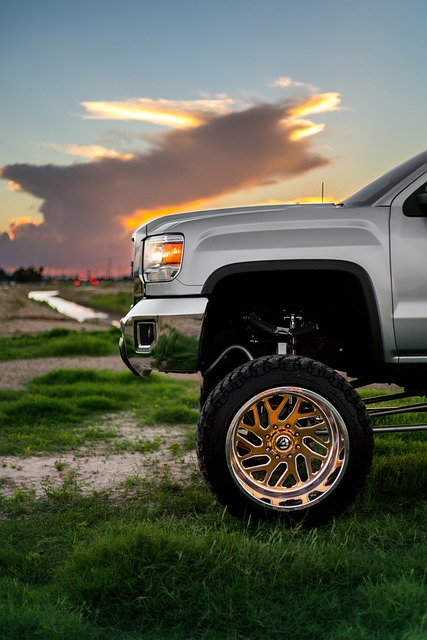Rock rails, made from durable steel or aluminum, serve as safety barriers for vehicles in high-risk areas like steep drops and construction zones. The Brownsville fleet Truck repair manual provides guidelines for installation, maintenance, and repairs, ensuring their structural integrity. By proactively managing these barriers, the fleet reduces rollover risk and side-impact collisions, enhancing overall safety and operational efficiency.
Rock rails are specialized protective barriers designed for trucks and fleets, particularly in rugged terrain. This article explores their diverse types, functions, and safety benefits. We delve into a case study of the Brownsville fleet, showcasing successful implementation for optimized repairs. Additionally, we provide manual guidelines for effective installation and repair, offering valuable insights for truck maintenance professionals using Brownsville fleet Truck repair manuals.
- What are Rock Rails?
- Types of Rock Rails: Function and Design
- The Role of Rock Rails in Truck Safety and Maintenance
- Brownsville Fleet Case Study: Implementing Rock Rails for Optimized Repairs
- Manual and Procedural Guidelines for Effective Rock Rail Installation and Repair
What are Rock Rails?

Rock rails are specialized barriers designed to protect vehicles and prevent them from veering off roads or overpassing hazards like cliffs. Typically made from sturdy materials such as steel or aluminum, these safety features are commonly found along roadside edges in areas prone to high-risk driving conditions, such as steep drops, construction zones, or narrow passes. They serve as a crucial element of road safety infrastructure for various vehicles, including Brownsville fleet Truck repair manual, by providing an additional layer of protection that complements existing guardrails and signage.
Types of Rock Rails: Function and Design

The Role of Rock Rails in Truck Safety and Maintenance

Rock rails play a pivotal role in ensuring the safety and longevity of trucks within the Brownsville fleet. These robust metal barriers are strategically installed along the sides and front of vehicles to protect against side-impact collisions, which can be particularly dangerous for commercial trucks due to their size and weight. By acting as a physical barrier, rock rails help prevent damage to the truck’s body and reduce the risk of rollovers, thereby safeguarding both the vehicle and its occupants.
Maintenance is another critical aspect where rock rails contribute significantly. Regular inspections and timely repairs, guided by the Brownsville fleet Truck repair manual, ensure these safety features remain effective. Proper maintenance involves checking for signs of corrosion, damage, or wear, replacing worn-out components, and ensuring the rails are securely fastened. This proactive approach not only maintains the integrity of the rock rails but also underscores the overall commitment to safety within the trucking operation.
Brownsville Fleet Case Study: Implementing Rock Rails for Optimized Repairs

The Brownsville Fleet, a case study highlighting the success of implementing rock rails for optimized truck repairs. This innovative approach has revolutionized their maintenance process by providing a structured and efficient system for handling damaged vehicles. With a focus on safety and cost-effectiveness, the fleet managers recognized the need for a robust solution to manage the increasing number of repairs.
The Brownsville Fleet Truck repair manual outlines a systematic implementation of rock rails, which act as guiding structures for repairing vehicles with minimal damage. This method streamlines the repair process, allowing mechanics to work with greater precision and efficiency. By utilizing this system, the fleet has witnessed reduced downtime for trucks, leading to increased operational productivity. The case study underscores the significance of embracing advanced repair techniques, such as rock rails, in modern fleet management practices.
Manual and Procedural Guidelines for Effective Rock Rail Installation and Repair

Effective rock rail installation and repair follow meticulous manual and procedural guidelines, ensuring safety and structural integrity. The Brownsville fleet Truck repair manual provides a comprehensive step-by-step approach, detailing each phase from site assessment to final inspection. This includes identifying potential hazards, selecting appropriate materials, and employing specialized tools for precise cuts and installations.
Adhering to these guidelines is paramount. Proper alignment, secure fastening, and regular maintenance are key to preventing damage from shifting terrain and extreme weather conditions. By following the manual’s recommendations, fleet managers can ensure rock rails are not only installed correctly but also withstand the rigors of daily use, contributing to safer operations and reduced vehicle wear and tear.
Rock rails have emerged as a game-changer in truck safety and maintenance, offering effective protection against side underbody damage. As demonstrated by the Brownsville fleet case study, their implementation can streamline repair processes, reducing costs and downtime. Adhering to the provided truck repair manual ensures optimal installation and repair practices. By understanding rock rail types and their functions, fleet managers can make informed decisions to enhance vehicle longevity and safety on the road.



